If you’ve ever been through a house fire, you know how scary the experience can be. With more than 353,100 house fires each year, according to the National Fire Protection Association, this type of accident is more common than you might think.
And once the fire is out, the work is just starting. House fire damage is often serious; even small fires can cause a lot of damage.
Much house fire damage isn’t a cheap or easy fix. Overall, house fire damage costs more than $14 billion per year, says the U.S. Fire Administration.
Trying to sell a house with fire damage isn’t easy, either. Fortunately, you have options when it comes to selling a home that’s been damaged in a fire. These steps will help you repair your fire-damaged house and get it ready to sell.
How Fast Can Fire Spread in a House?
Thirty seconds. That’s how long it takes for a tiny flame to grow into a fire that can threaten lives, ruin your belongings, and cause serious damage to your home.
House fires are more common than you might think… and more expensive. Even if a fire doesn’t injure anyone (or take anyone’s life), homeowners are all too often left with thousands and thousands of dollars of property damage.
For instance, a kitchen damaged by fire can cost up to $50,000 to rebuild. If that seems like a lot, you’re right… and the costs of damages have grown in recent years, thanks to the increased speed at which house fires spread.
Just three decades ago, those experiencing a house fire had about 14 to 17 minutes to get out. But today, the time to escape is a mere two to three minutes.
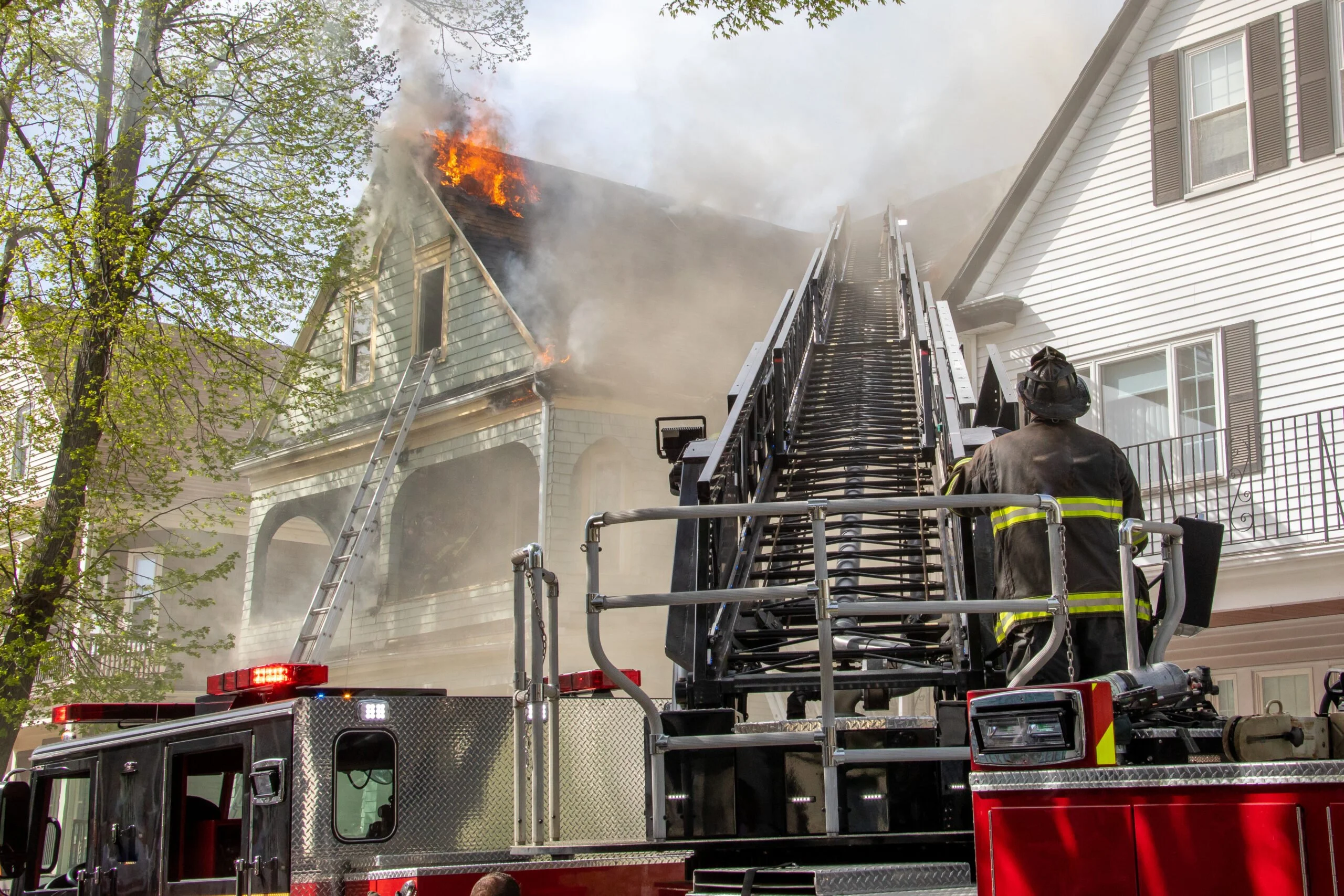
Why is this? It’s due in large part to the amount of synthetic materials used in home furnishings, says This Old House. The synthetic component used to create today’s furnishing and housewares simply ignite and burn faster.
Here’s a rough timeline of how fast a fire spreads:
- A fire ignites on the stovetop (where about half of all house fires start)
- 0 to 30 seconds: flames spread across the range, igniting any cooking oils or grease and causing nearby combustibles (such as paper towels or dish rags) to smolder
- 30 seconds to 1 minute: As more items ignite, flames grow higher and spread, and toxic gases are released into the air
- 1 to 2 minutes: Heat from the fire reaches cookbooks and countertops, while smoke and toxic air fill the room and spread to other parts of the home
- 2 to 3 minutes: Flames reach cabinets, appliances, and dry goods, and a dense smoke now reaches from the ceiling almost to the floor
- 3 minutes and 30 seconds: The heat has now grown intense enough to cause a “flashover,” when everything in the room ignites and the oxygen is sucked from the room. Now, all other rooms in the house are at risk.
- 3:30 to 4 minutes: Carpets and upholstery in other rooms ignite; as these synthetic materials burn, they generate even more heat and toxic fumes. The fire is now hot enough to travel vertically within the walls of the house.
- 4 to 5 minutes: Flames reach the second floor and are now visible from outside. the fire has reached 1000 degrees, hot enough to cause steel plates to buckle, and for synthetics used in plumbing and insulation to ignite. Roof and floor collapse follow shortly.
It only takes a few minutes for even a small fire to grow, causing damage to your home and property… and threatening the lives of everyone inside.
What Happens After a Fire in Your House?
Immediately after a fire, take stock of the situation. Place a priority on safety, and ensure any people or animals that have been burned or inhaled smoke receive the medical or veterinary treatment they need.
Once everyone has received care, the American Red Cross recommends staying out of the home until the fire authorities say you can go back in. Of course, you’ll also want to let your family and friends know that you’re safe.
When you have the OK to re-enter your home, check your house for the following issues.
Structural Damage
Start by surveying the outside of the home, looking for things like cracks in the foundation, downed power lines, broken gas lines, and damaged support beams.
These issues can be serious, so you may want to call in an inspector or contractor to make sure your home isn’t structurally compromised.
Once you’re inside, look for problems such as sagging ceilings or floors. Often, water damages the home along with flames and smoke. Both ceilings and floors may collapse under the weight.
While you’re checking for structural damage, note areas that need temporary repairs. Some issues will need immediate attention.
For instance, you may have to brace walls, cover holes and take damaged items or debris out of the house.
Electric and Plumbing
Next, check your home’s systems. If you notice any frayed wires or see sparking, turn your power off at the fuse box. While you’re there, look for any tripped breakers. You’ll want an electrician to inspect them.
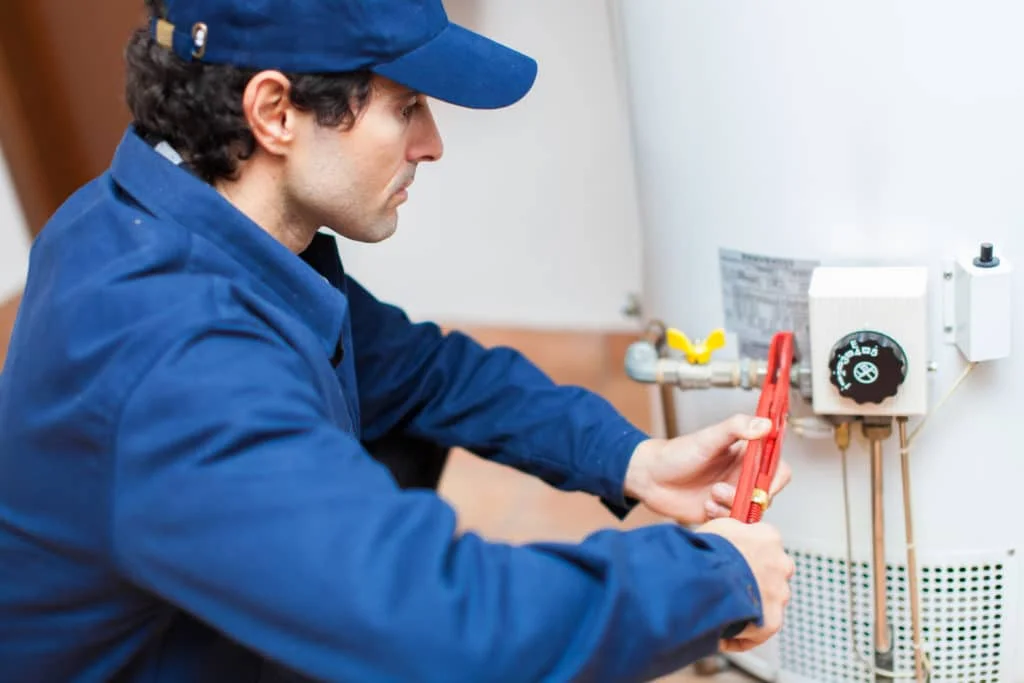
If you think the water pipes have been damaged, turn off the water main. Don’t use toilets, sinks, or showers until you can call a plumber.
After you experience a fire, you’re probably feeling a lot of emotions, from stress and anxiety to worry and even anger. This is completely natural, and it’s important to give yourself and your loved ones the time you need to process.
Is it Safe to Sleep in a House After a Small Fire?
While every situation involving house fire damage is unique, as a general rule, you will not be able to sleep in a fire-damaged home right away. You’ll need to find somewhere else to stay, at least for a few days.
Why? Because even if a house seems safe, flames, smoke, soot, and ash can cause hazardous conditions that may negatively affect your health. Plus, items that were burned or heated in the fire can release toxins that may impact air quality.
Any toxic chemicals will need to be removed and the home cleaned before you can safely sleep there. It’s also important to have the home inspected to ensure it meets safety and air quality standards.
Keep in mind that you should remove pets from the property, as well. A toxic, unsafe environment isn’t good for pets or people.
Can You Live in a House with Fire Damage?
Once your home has been cleared by a safety inspector — and the air quality has been found to be safe — you may choose to move back in. For many families, finding a new place to live simply isn’t possible, or within their budget.
But living in a home with fire damage presents some special concerns. Fires may damage a home’s structural integrity, even in ways that aren’t immediately visible.
Treat these types of fire damage as “red flags” that more problems may be lurking in your house’s structure:
- Wood with visible charring
- Cracks in concrete, bricks, or masonry
- Warping or cracking steel
Air quality is also a concern after a house fire. If all toxins and hazardous chemicals aren’t removed — even from small enclosed spaces, such as cupboards and closets — you may experience health issues such as:
- Irritated eyes
- Skin rashes
- Breathing and respiratory issues
Another common issue after a house fire? Mold.
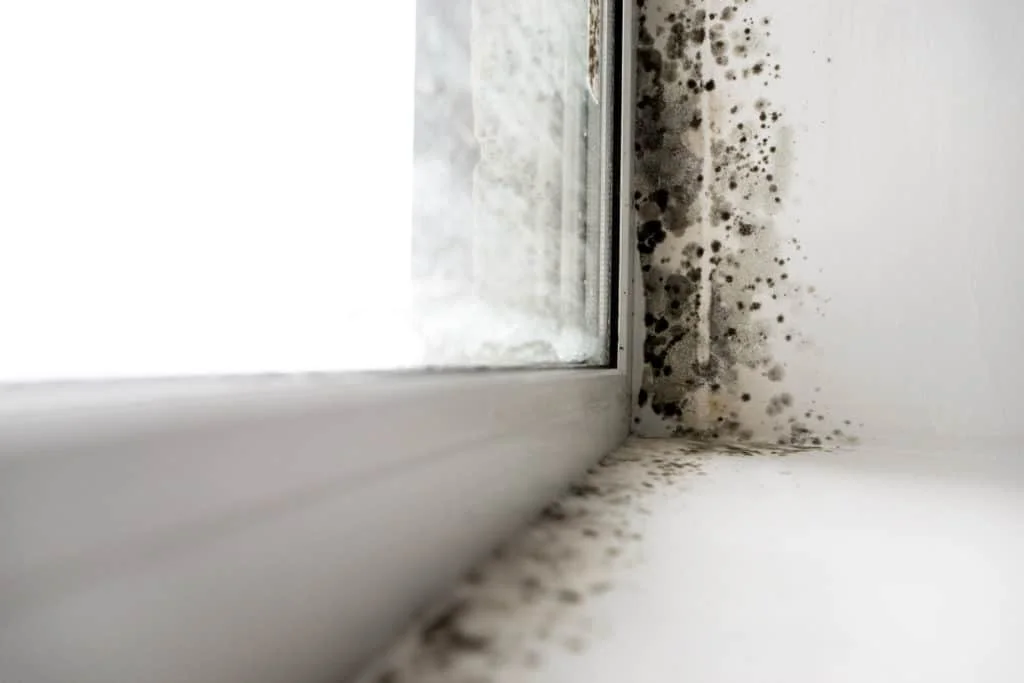
The water and fire extinguishers used to put out a fire can cause ideal conditions for mold, i.e. damp and moist. Mold can spread quickly and cause a number of health problems from allergic reactions to skin, nose, and throat irritation.
Unfortunately, mold can be hard to manage. Along with the health risks, mold in a home can make it very hard to sell, so it’s something you must deal with. Often, mold requires professional remediation, which isn’t cheap.
What Does Smoke Damage do to a House?
Along with the more obvious issues caused by a house fire-charred wood, blackened walls, melted glass, and plastics — smoke also causes a significant amount of damage. Unfortunately, soot and smoke can keep causing damage, even after the fire is out and the flames are extinguished.
Smoke spreads quickly throughout your house, even touching areas that aren’t directly affected by flames. Along with the damage caused by heat, smoke (and the soot that comes along with it) has acidic properties that can affect and damage your home’s structure.
The acids in smoke, such as those found in carbon and sulfur, corrode metal. From doorknobs to cabinet pulls, locks to pipes, and even structural elements, this corrosion can lead to structural issues. This type of damage may make your house unsafe to live in, as well as difficult to sell.
Along with structural damage, smoke discolors porous materials in your house. Plastics and certain types of stone, like marble that’s often found in countertops and tiles, may be permanently discolored after just a short exposure to smoke.
Acids found in smoke can harm other items in your house, too:
- Walls and carpets may be permanently discolored
- Paint and wallpaper face risk of corrosion from acidic residue
- Curtains and upholstery may yellow if not treated immediately with alkaline cleaners
- Clothing may be permanently damaged by smoke; tossing clothes in the washing machine may simply set smoke odors and residue can irritate the skin
- Appliances can absorb smoke odors, and the acids can damage electrical wiring and systems
- Porcelain, such as that found in bathroom fixtures, may etch and discolor
Can Fire Damage Be Repaired?
After a fire, it’s common to see property damage that extends through the house. Some of this damage can be repaired through the fire restoration process. Keep in mind that not all damage is immediately visible, but may still exist.
Even in rooms that didn’t experience open flames, there may be damage such as:
- Melted plastic
- Softened window glass
- Blistered paint
- Charred wood
- Appliance components melted
Other common repair issues that may not be obvious include dehydrated drywall. Dried-out drywall is at risk of crumbling, and will need to be replaced.
Burned or charred wood is inherently unstable. You’ll need to find and replace areas of affected wood.
Soot and ash can coat walls, floors, and furniture. The chemicals they contain make this coating difficult to remove.
Then there’s the smoke damage. Even in parts of the home untouched by fire, the smell of smoke and chemicals permeates everything — even items in storage or tucked away in drawers or cupboards. Unfortunately, it’s not an easy odor to neutralize.
How Much Does it Cost to Repair Fire and Smoke Damage?
While every situation is different, one thing is for certain: Repairing fire and smoke damage isn’t cheap. According to Home Advisor, the average costs of repairing house fire damage range from $2,900 to $31,000.
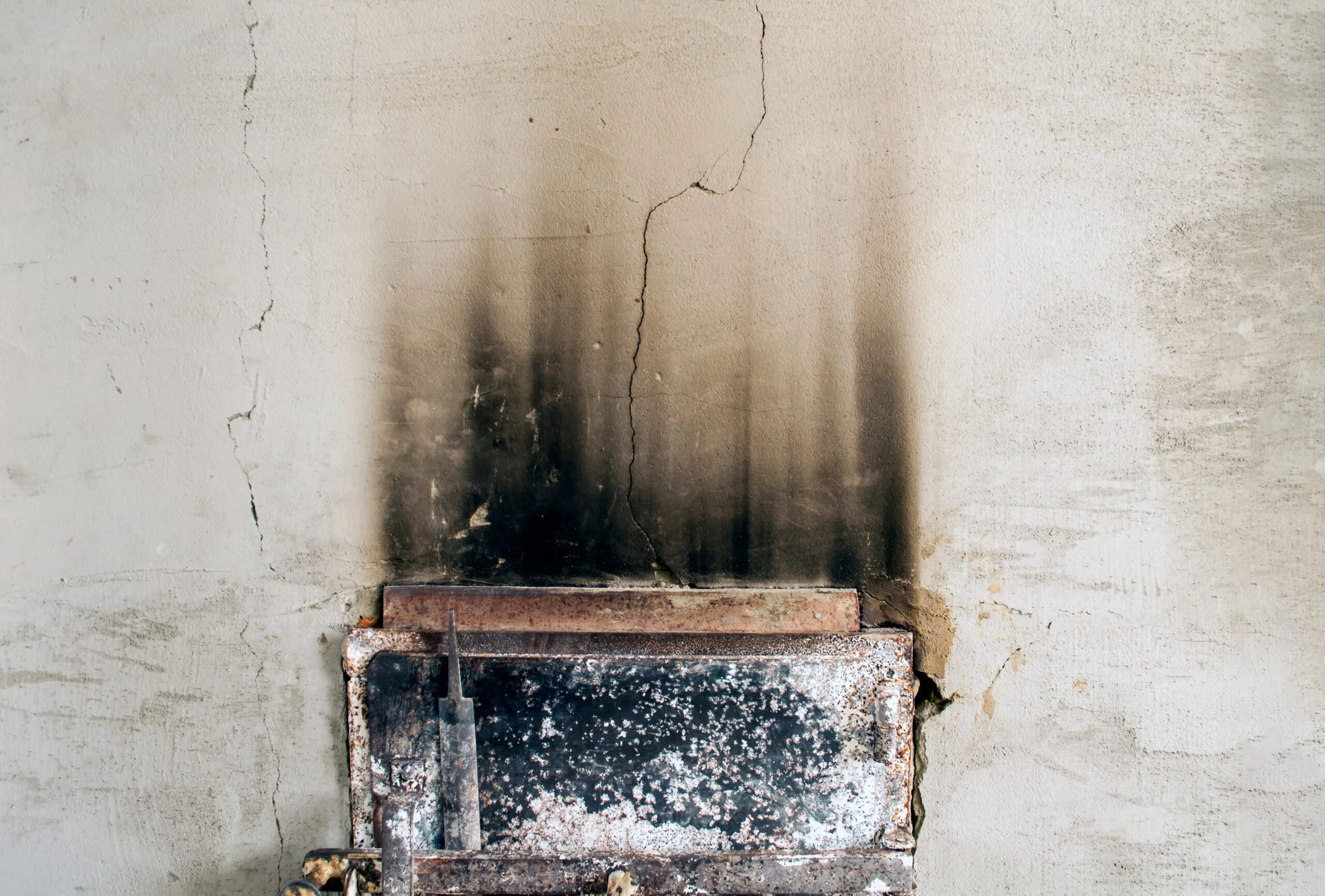
The national average for home fire damage coasts comes in at just over $15,500. Of course, the total expense depends on factors such as the amount and type of damage, including the need for water damage cleanup, chemical cleanup from fire extinguishers, soot removal, smoke damage and more.
Let’s break these costs down.
Water Damage
The water used to put out a fire, while necessary, can cause a lot of damage. Water damage cleanup runs from $1,000 to $3,900 and may involve professional dehumidification, wall and floor repair, mold remediation, and more.
Carpets, drywall, and floors are extremely susceptible to mold after being soaked with water from a fire hose. You’ll likely have to bring in a professional to ensure that mold issues are handled appropriately.
Chemical Cleanup
Chemical cleanup usually costs between $1,000 and $2,500. Fire extinguishers leave a toxic residue that’s great for putting out flames, but not great for humans and pets that must live in the house after a fire.
The chemical cleanup process involves removing toxic residue. You may also need chemical sealers to prevent further health risks. Again, this is a job for professionals, due to the potential health hazards these chemicals present.
Soot Removal
Soot removal has an average cost range of $2,000 to $6,000. This process takes place after the water has cleaned up, but needs to be done as soon as possible. The longer soot is left untreated in your home, the more it can penetrate walls, upholstery, carpets, and more.
There are two types of soot, depending on what types of materials burned. Each requires a different cleaning method:
- Dry soot: clean with a low alkali detergent and dry cloths or sponges
- Oily soot: clean with high alkali detergent, followed with thorough rinsing (the dry soot cleaning method will simply spread oily soot, making the damage worse)
Soot can penetrate into every corner of your home, including air vents, ducts, and filters. Given the difficulty of cleaning this noxious substance, it’s sometimes easier (or even less expensive) to simply throw items out and replace them.
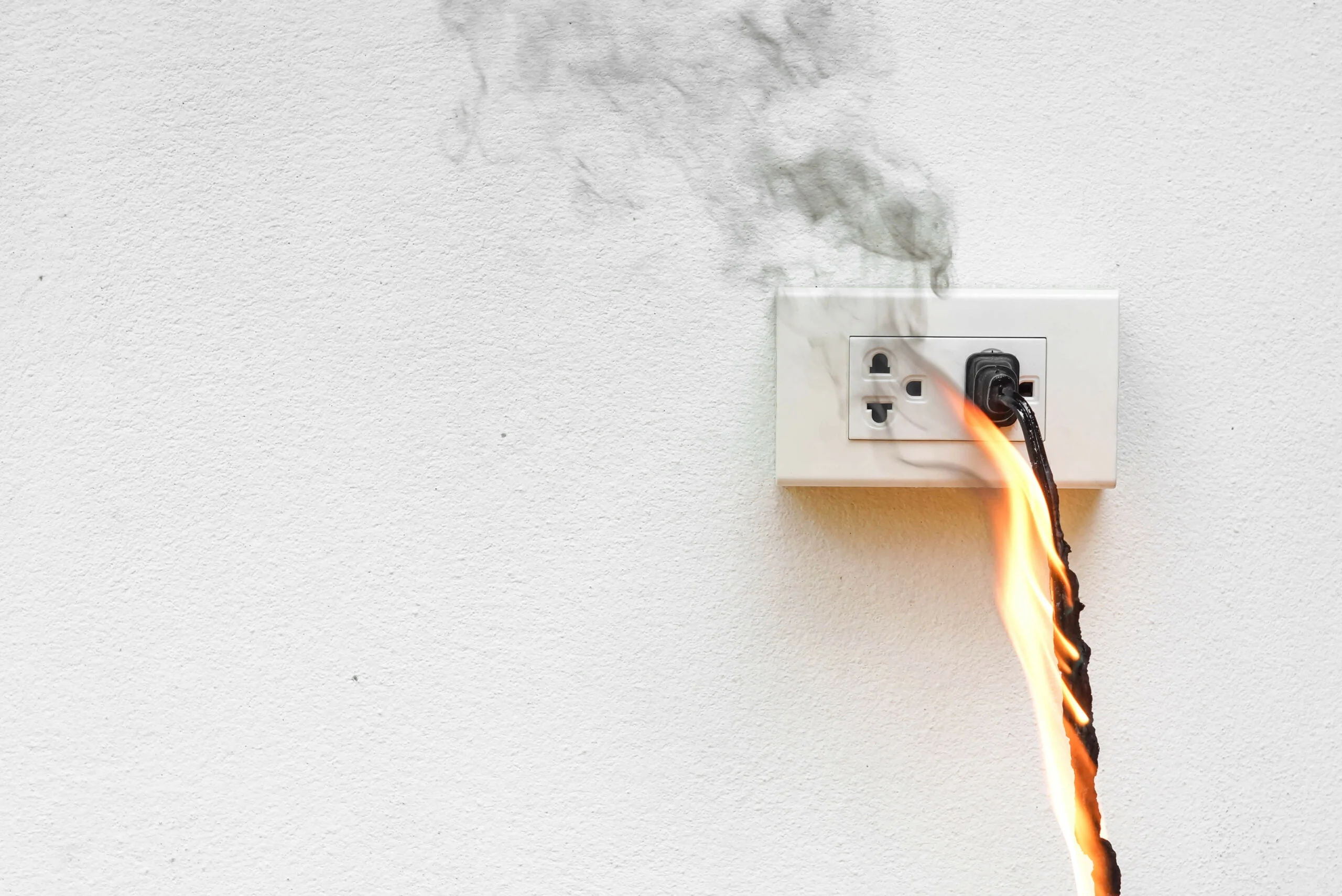
Smoke Damage
Smoke damage restoration costs up to $1,000, depending on the type and extent of the damage. This cleaning step can only take place after water damage, chemical cleanup and soot removal have been addressed.
However, just like soot damage, smoke damage worsens the longer it’s left untreated. The smell soaks into your home and belongings, penetrating furniture, drapery, carpets, walls, and other items. Plus, acidic compounds in smoke can damage your home’s structure, metal, wiring, walls, floors, carpets, appliances, and more.
Does Smoke Smell Eventually Disappear?
Unfortunately, if left untreated, smoke odors will not go away. The acids found in smoke mean that it penetrates deeply and quickly.
Getting rid of the smoke odor usually involves multiple steps and services, including:
- Furniture and textile deodorizing; costs from $200 to $1,000 to remove odor from carpets, drapes, clothing, and upholstery
- Thermal fogging, a chemical odor mitigation technique that costs from $200 to $600
- Ozone treatment, a process that removes the smell from wet or drying items and costs between $200 to $500
Mitigating the damage quickly is key, and different issues require specialized treatment approaches. Often, ridding your home of smoke smells after a fire requires professional services.
What Items Can Survive a House Fire?
After experiencing a house fire, you’re faced with many unpleasant tasks. Among them is deciding what you can salvage and what must be thrown away.
Unfortunately, certain items just aren’t safe to keep after a fire, such as food. While throwing away uneaten food is difficult, toxic fumes and compounds released in a fire render much food unsafe for consumption.
Any open containers in your cupboards or pantry should be discarded. But even sealed items, including canned food, may be contaminated. If you suspect a food item has been in contact with containments, it needs to go.
As for perishable food in the fridge or freezer, inspect the inside of the appliance for any smoke smell or soot residue. If the appliance has been contaminated, everything inside needs to be thrown out.
The same goes for food that was in a refrigerator or freezer that lost power for several hours.
Next, inspect your medicine cabinet. If items show signs of soot, fire extinguisher dust or a smoky smell, they must be discarded. The same goes for cosmetics and personal care items.
If clothing, bedding or other textiles have been burnt or charred, discard them. Though some textiles may be salvageable with proper care, it’s not worth risking contact with toxic contaminants.
As a general rule, if you doubt whether or not to keep an item, err on the side of caution and throw it away. The contaminants from a house fire, such as smoke, soot and extinguisher chemicals, pose a health hazard.
Selling After House Fire Damage
Cleaning up the aftermath of house fire damage is bad enough. The situation is even worse if you were planning on selling your home anytime soon.
Unfortunately, most home buyers aren’t going to be interested in a house that will need major repairs just to be inhabitable. That leaves you in a tough position:
Is it worth it to invest money, time, and effort in making all the necessary fixes after a fire? After all, cleaning up all that fire damage will likely run into the thousands, if not tens of thousands, of dollars.
You want to get a reasonable price when selling your home. But imagine putting a fire-damaged home on the market and discovering it’s overpriced. The last thing you want is for your home to linger on the market unsold.
Another common after-fire scenario: You complete some repairs, put your house on the market and find a buyer. But the home inspection reveals big fire-related problems, such as:
- Structural damage
- Foundation cracking
- Water damage
- Mold growth
- Warped floors, window and door frames
- Damage to the electrical, plumbing or HVAC system
The buyer backs out, leaving you with a laundry list of (expensive) problems to fix and an unsold house that you don’t want to — or can’t — keep living in. It’s no wonder that so many homeowners feel stress and anxiety after a fire.
Fortunately, there’s a solution: you can sell your fire-damaged home as-is to HomeGo.
Not only will you receive a fair price, but you also won’t have to make any repairs. HomeGo provides a firm, same-day offer and your sale closes on your schedule — sometimes as soon as 7 days. (Not ready to move quite so soon? HomeGo offers a leaseback option so you can enjoy flexibility.)
When you’re overwhelmed by fire damage, the last thing you need is more uncertainty and stress. Stop worrying about paying for repairs and selling a fire-damaged home and simply let HomeGo help.




